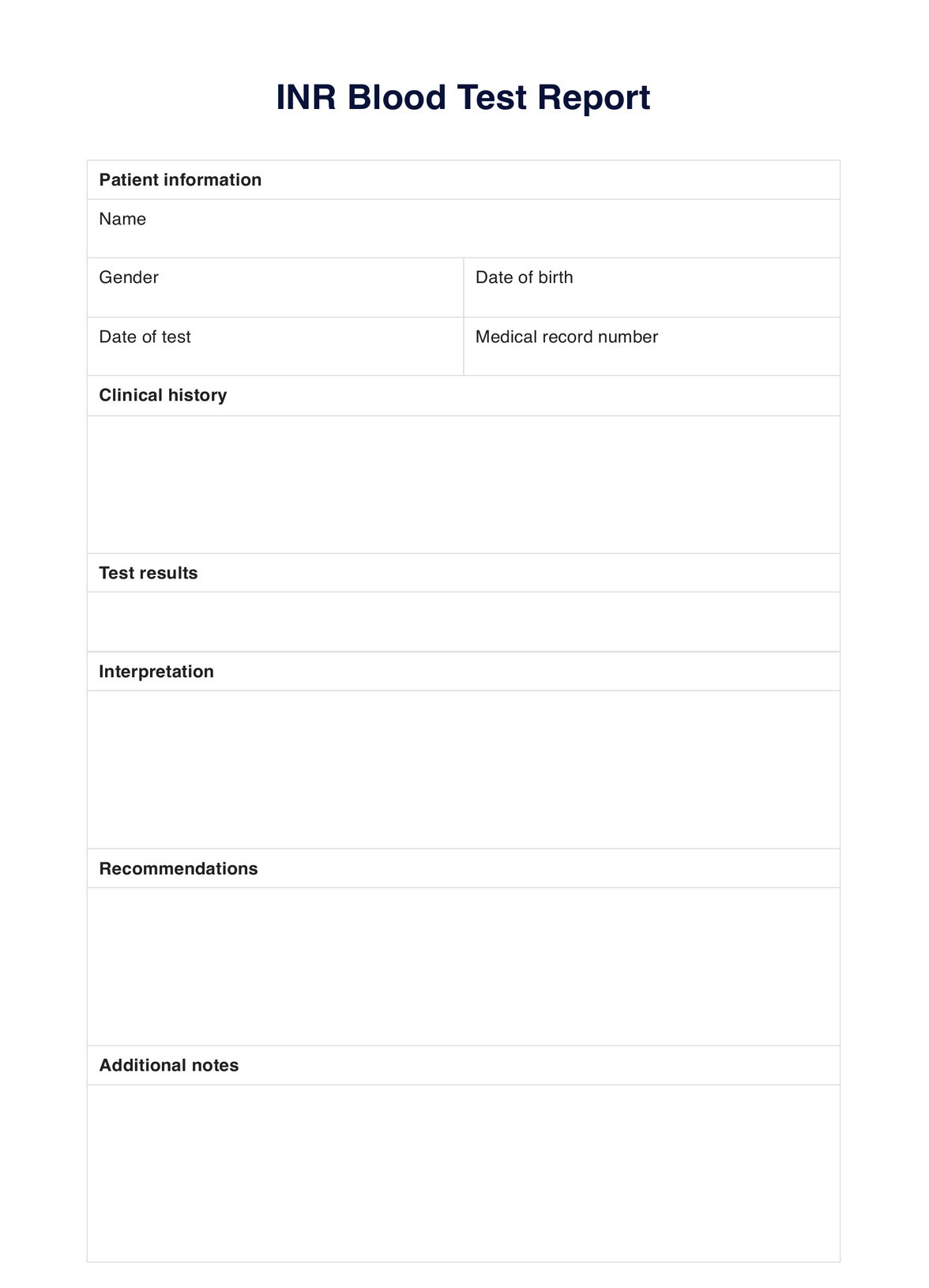Healthcare professionals typically request INR blood tests for patients on anticoagulant medications, those with a history of clotting disorders, and individuals at risk of clot formation. Monitoring INR is essential for managing anticoagulant therapy effectively.

INR Blood Test Reports
INR Blood Tests help monitor blood clotting tendencies. Download an INR Blood Test Report to organize and record patient results.
INR Blood Test Reports Template
Commonly asked questions
The frequency of INR blood testing depends on the patient's medical history and treatment plan. It is often done regularly to ensure that INR levels remain within the target range for safe and effective anticoagulant therapy.
INR blood tests monitor and manage anticoagulant therapy, assess clotting tendencies in patients at risk of clot formation, and ensure that blood clotting is appropriately controlled. They are also used for follow-up and intervention planning.
EHR and practice management software
Get started for free
*No credit card required
Free
$0/usd
Unlimited clients
Telehealth
1GB of storage
Client portal text
Automated billing and online payments











